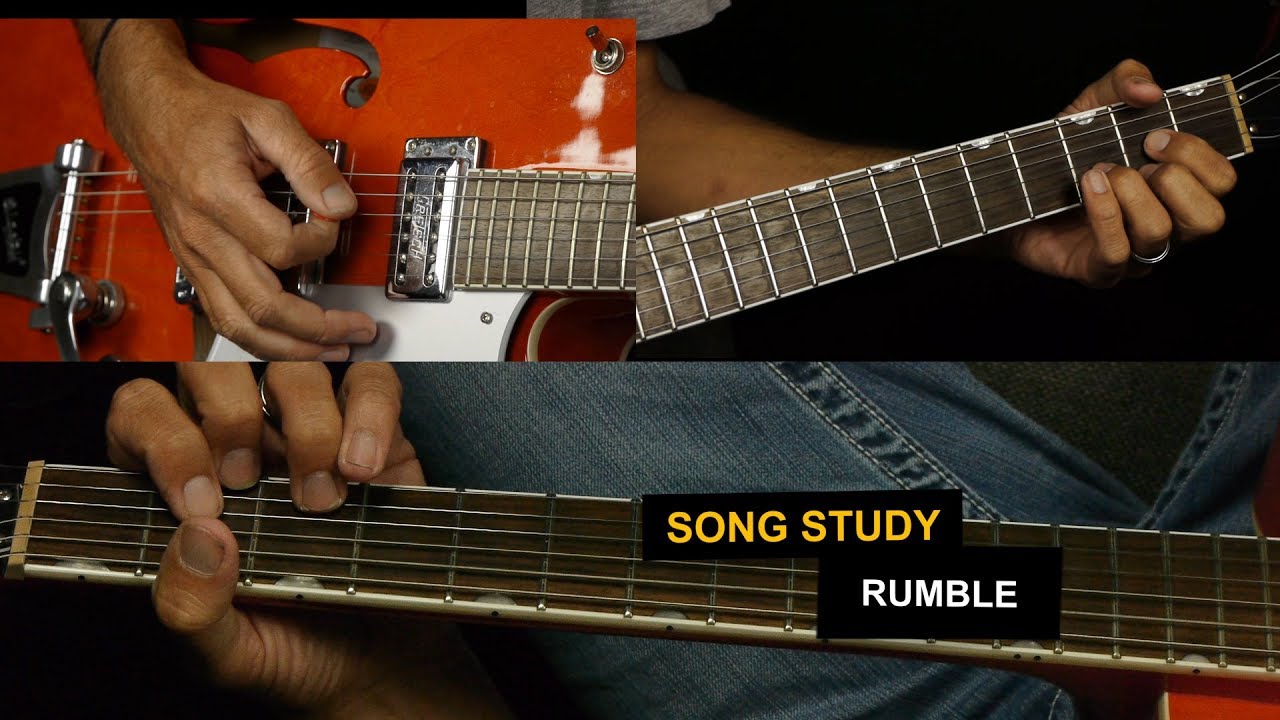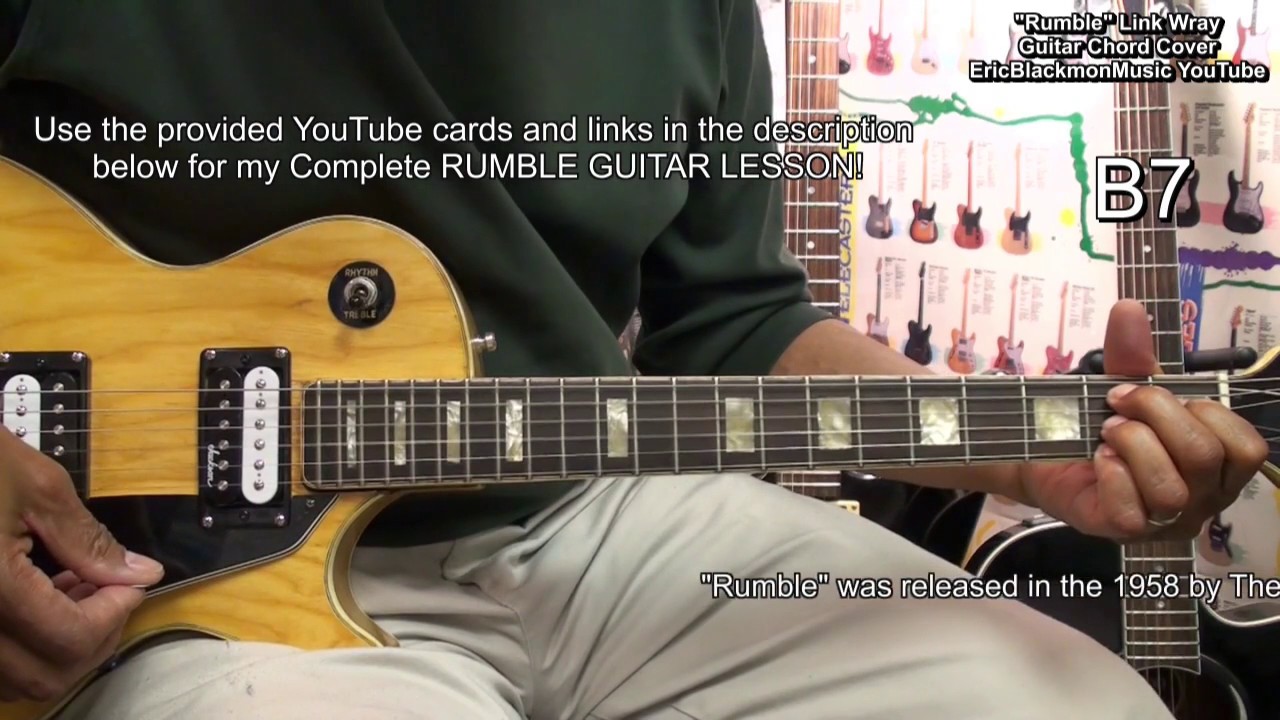Link Wray is a name that echoes through the halls of rock and roll history, known for his groundbreaking work in the world of guitar. Born in 1929, Wray was a pioneer of rock music and is often credited with shaping the sound of heavy metal and punk rock. His instrumental hit, "Rumble," released in 1958, is a prime example of his innovative guitar work and raw sound.
“Rumble” stands out with its powerful riffs and haunting melodies, capturing the essence of rebellion and youthful angst. The song's unique sound, created by Wray's use of distortion and power chords, has influenced countless musicians over the decades. If you've ever heard the phrase "the song that made the electric guitar dangerous," it’s referring to this iconic track. Learning to play "Rumble" not only pays homage to a rock legend but also gives you a chance to explore the gritty and vibrant world of early rock guitar.
Essential Equipment for Playing Rumble

To dive into the world of Link Wray’s "Rumble," having the right equipment can make a significant difference in capturing that authentic sound. Here’s what you’ll need:
- Guitar: A solid-body electric guitar is ideal. Wray famously played a Gibson Les Paul, but any guitar with good sustain and the ability to handle distortion will work. Consider models like the Fender Stratocaster or Telecaster for their bright tones.
- Amplifier: A tube amplifier will help you achieve that warm, distorted sound. Look for amps that can break up nicely at lower volumes, such as a Fender Deluxe Reverb or a Marshall combo amp.
- Effects Pedals: Distortion is key for "Rumble." A quality distortion pedal, like the Pro Co Rat or Boss DS-1, can help you replicate Wray's signature tone. Adding a reverb pedal can also enhance the atmospheric quality of your sound.
- Strings: Opt for heavier gauge strings (like .010 to .046) to help achieve that thick, full tone that characterizes the song.
- Pick: A thicker pick will give you more control and dynamic range when striking those power chords.
With the right equipment in hand, you'll be ready to channel the spirit of Link Wray and make "Rumble" your own!
Also Read This: Who Won the First Ever Royal Rumble Match?
Understanding the Song Structure

When diving into "Rumble" by Link Wray, it’s essential to grasp the song's structure to fully appreciate its raw energy and iconic riffs. The song can be broken down into several key sections that flow seamlessly into each other. Here's a simple breakdown:
- Intro: The song kicks off with a powerful guitar riff that sets the tone. This is where Link Wray’s signature sound makes its first impression.
- Verse: The verse features a repetitive yet engaging pattern that builds tension. It’s simple but effective, allowing the listener to get lost in the groove.
- Chorus: The chorus explodes with intensity, showcasing Wray’s ability to blend melody with power. This is where the signature riffs shine the brightest.
- Bridge: The bridge section adds a different flavor, often featuring a slight shift in dynamics that keeps the listener engaged.
- Outro: The song typically concludes with a reprise of the main riff, leaving you craving more of that electrifying sound.
Understanding this structure allows you to anticipate transitions, making it easier to learn and master the riffs. Each section is crafted to create a thrilling ride through melody and rhythm, embodying the spirit of rock and roll.
Also Read This: How Does Rumble Pay? A Breakdown of the Payment System
Learning the Iconic Riffs

One of the most exciting parts of playing "Rumble" is learning its iconic riffs. These riffs not only define the song but also exemplify Link Wray's innovative use of distortion and power chords. Let’s break down the main riffs you’ll need to master:
| Riff Number | Description | Techniques |
|---|---|---|
| 1 | Main Riff: The driving force of the song, characterized by its gritty tone. | Power chords, palm muting |
| 2 | Verse Riff: A more subdued riff that complements the main theme. | Single notes, slight bends |
| 3 | Chorus Riff: An explosive variation that ramps up the energy. | Open chords, aggressive strumming |
To effectively learn these riffs, start by breaking them down into smaller sections. Practice slowly, focusing on clean execution. Once you feel comfortable, gradually increase your speed. Also, don’t forget to use your ear—listening to the original track will help you capture the nuances that make each riff special!
Curl error:
Also Read This: Who Has the Most Royal Rumble Eliminations – Top Performers in Rumble History
Techniques Used in Rumble
Link Wray’s “Rumble” is an iconic instrumental track that showcases several essential guitar techniques. To truly capture the essence of this song, it’s crucial to understand these techniques:
- Power Chords: The backbone of "Rumble" lies in its heavy use of power chords. These are simple two-note chords that create a punchy sound. Practice moving between power chords to maintain that driving rhythm.
- Slide Techniques: Wray often uses slides to transition between notes. This technique gives a smooth, connected sound that adds to the song's intensity. Try sliding into the power chords for that authentic feel.
- Palm Muting: This technique involves lightly resting the palm of your picking hand on the strings near the bridge. It creates a muted, percussive sound that is essential for the “Rumble” vibe. Experiment with different degrees of muting for variety.
- Echo and Reverb: While not a direct guitar technique, applying echo and reverb effects can enhance the sound. Wray’s tone was characterized by these effects, creating a spacious and haunting atmosphere.
By mastering these techniques, you’ll be well on your way to playing “Rumble” with the same raw energy that Link Wray brought to the stage.
Also Read This: Where to Watch the 2024 Royal Rumble?
Tips for Mastering the Song
Mastering "Rumble" can be a rewarding experience, but it requires practice and dedication. Here are some practical tips to help you nail those classic riffs:
- Start Slow: Begin by playing the song at a slower tempo. This allows you to focus on accuracy and technique without getting overwhelmed. Gradually increase the speed as you gain confidence.
- Use a Metronome: Keeping time is crucial for a song like “Rumble.” Practice with a metronome to develop your timing and rhythm. Start at a comfortable speed, then challenge yourself with faster tempos.
- Break It Down: Split the song into sections. Focus on mastering one part before moving on to the next. This segmented approach makes learning less daunting and helps retain information.
- Record Yourself: Listening to recordings of your practice sessions can provide valuable feedback. You’ll be able to hear areas for improvement and track your progress over time.
- Watch Tutorials: Utilize online resources or video tutorials. Seeing someone else play the song can clarify tricky parts and introduce you to helpful tips that might resonate with your learning style.
By applying these tips, you’ll be well on your way to playing “Rumble” like a pro, capturing its gritty, powerful essence!
How to Play Link Wray Rumble on Guitar and Learn the Classic Riffs
Link Wray’s “Rumble” is an iconic instrumental rock song released in 1958, known for its raw sound and groundbreaking use of distortion. Playing this song on guitar not only hones your skills but also connects you to the roots of rock and roll. Here’s a detailed guide to help you master the classic riffs of “Rumble.”
Essential Gear:
- Electric guitar (preferably with single-coil pickups)
- Guitar amplifier with a distortion setting
- Slide (for additional effects)
Basic Chords and Structure:
The song primarily revolves around two power chords:
| Chord | Fret Position |
|---|---|
| F5 | 1st fret (E string) |
| B♭5 | 1st fret (A string) |
Riff Breakdown:
The main riff is simple yet effective. Start with the following steps:
- Play the F5 chord (1st fret) with a muted strumming technique.
- Transition to the B♭5 chord (1st fret on A string) with a similar muting style.
- Alternate between the two chords, accentuating the downbeats for a groovy feel.
Additionally, incorporating slides and bends will bring the riff to life, replicating Wray’s gritty sound.
Conclusion: Mastering Link Wray’s “Rumble” on guitar is a rewarding experience that deepens your understanding of rock music’s evolution. Dive into this classic, and you'll not only improve your guitar skills but also appreciate the artistry behind the iconic riffs.
Further Listening: Explore other influential tracks such as “Apache” by The Shadows and “Misirlou” by Dick Dale to expand your rock guitar repertoire.
 admin
admin








